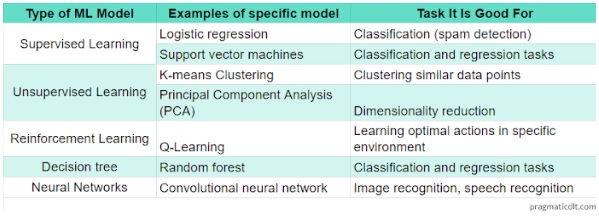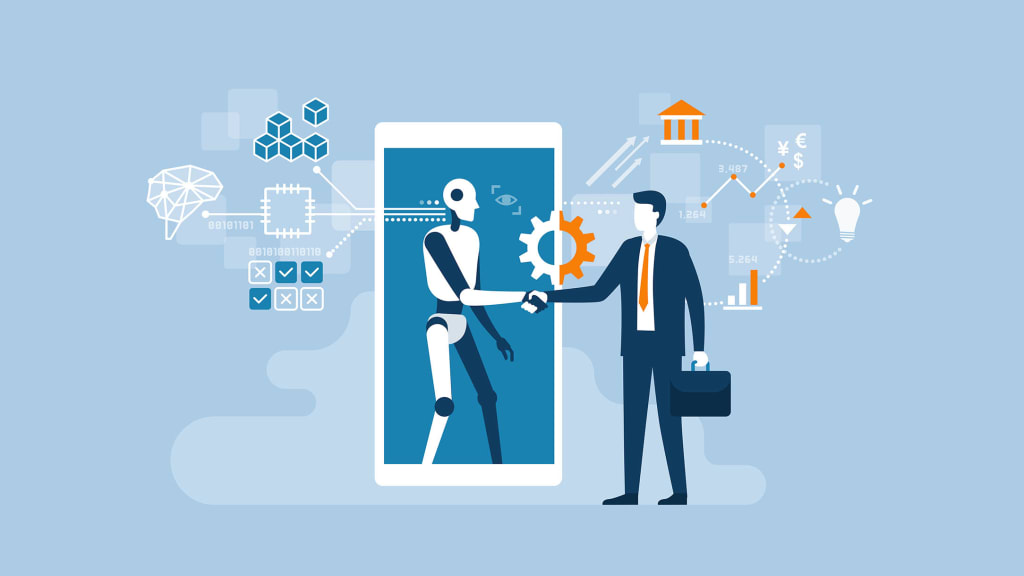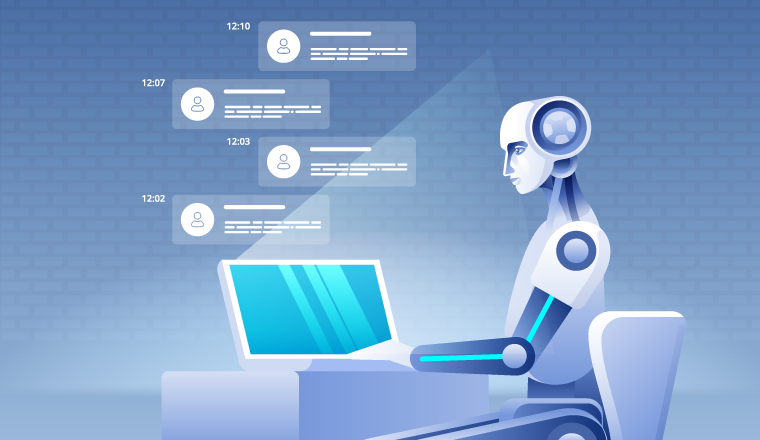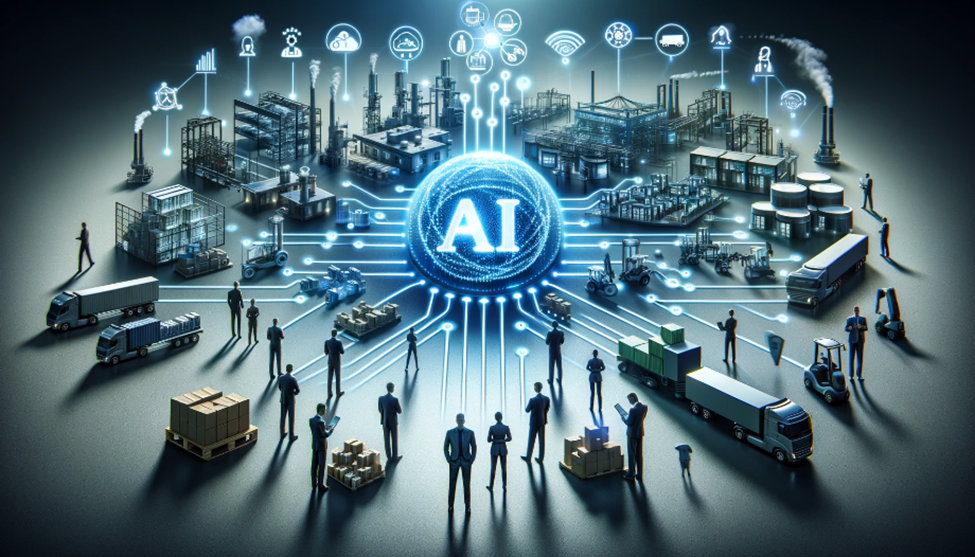Intro
In today’s fast-paced world, technology is constantly changing, and artificial intelligence (AI) is leading the way in this revolution and impacting how we run a business. AI isn’t just the future of your business – it’s the here and now. So, if you haven’t integrated artificial intelligence into your business yet, you’re falling behind your potential competitors. By making customer support more efficient with chatbots and automating complex tasks like coding, the possibilities are endless. And the best part? Building your own AI might be easier than you think.
This guide will walk you through:
- The basics of building an AI model and how it can benefit your business;
- Leverage existing technologies to create an AI, with step-by-step instructions on how to make your own AI without a lot of resources and skills;
- Developing cost-effective AI solutions that will help you make money and similar questions you may have or will have.
In this comprehensive guide, we will help you explore the potential of implementing AI into your business and creating a cost-effective AI personal assistant or chatbot by leveraging existing technology. Best part? You may even do it for free!
What is Artificial Intelligence?
Artificial Intelligence (AI) is the technology that enables computers and machines to mimic human intelligence and problem-solving skills, learn from available data, and make increasingly accurate classifications or predictions over time.
From machine learning to natural language processing and computer vision, AI encompasses a range of components that work together to analyze data, make decisions, and solve problems. Whether recognizing images, understanding human speech, or translating languages, AI enables software to think, learn, and act like humans.
Types of Artificial Intelligence
AI can come in different types, depending on what they can do and how they work. Let’s take a look at various kinds of AI:
Based on capabilities:
- Artificial Narrow Intelligence (ANI) is designed to perform specific tasks or solve particular problems, such as translating languages, recognizing images, creating recommendation systems, or driving a car. Most of today’s AI systems, such as Siri, Alexa, and Google Assistant, fit into this group.
- Artificial General Intelligence (AGI) has cognitive abilities similar to humans. It can understand, learn, and apply knowledge across different domains. It can independently develop its skills and handle new and unknown tasks.
- You may also have heard about Superintelligent AI – a concept that envisions an AI surpassing human intelligence in virtually all forms of economically valuable work due to its enhanced ability to reason, solve complex problems, think abstractly, learn quickly, and understand complex ideas.
Based on functionalities:
- Limited memory AI – learns from previous experiences and gains knowledge by observing actions or data. It uses historical data and pre-set information to make predictions and do complicated sorting jobs. This is the most commonly used AI nowadays in self-driving cars.
- Reactive AI – it is the primary type of AI, which is designed to give a response depending on the input it gets and specific situations, and they can’t learn or think about the past or future. The most common example of this type of AI is a chess-playing AI that can’t learn from previous games but adapts to the current moves and forms its actions based on this.
Mindful AI is just a theory at this point, imagining a next-level AI. Such AI would not only understand and interpret people’s emotions, beliefs, and what they want and react in a way that fits the situation. Such an an entity would be able to make its own decisions and assumptions and become an independent actor.
How Does AI Work?
Artificial Intelligence (AI) operates through advanced methodologies and applications, forming the backbone of its functionality. Here’s a breakdown of the critical components:
Machine Learning – is an algorithmic approach that enhances performance on a task, based on learning from data, also it can predict new output relying on historical data. It comes in two main forms:
- Supervised learning – AI learns from labeled datasets to classify and predict the following deliverables. For example, you can teach a system to recognize specific items in images by providing the AI with many labeled images of specific and non-specific items. The AI learns to distinguish between the two by identifying standard features in the selected images. Then, when a new image is shown, the AI can accurately determine whether it contains your selected item based on its learned features.
- Unsupervised learning works with unlabeled data, letting computers find hidden patterns or structures on their own and giving required results without interference. The algorithm examines the patterns and similarities within the data and organizes it into clusters based on these similarities. For instance, a K-means clustering algorithm can partition the customer data into distinct clusters, each representing a different segment of customers. These segments could include groups of customers who tend to purchase similar products, exhibit similar browsing behavior, or belong to similar demographic profiles.
Deep Learning – uses the neural network architecture akin to the human brain’s neurons. This technology uses layered neural networks for taking in information and giving out answers, and they can do really complicated tasks like figuring out patterns and simplifying things. Enable AI to perform complex tasks, like image and facial recognition, understanding human speech, translating words between languages, autonomous vehicle navigation, and much more.
Reinforcement learning is part of ML. It uses algorithms that learn from outcomes to optimize decision-making. Feedback (good, neutral, or bad) after each action guides AI in discerning the most effective strategies, making it invaluable for autonomous systems.
Natural Language Processing (NLP) empowers machines to understand and interact with human language. It enables tasks like text translation, summarization, and speech recognition. NLP forms the foundation of virtual assistants and spam detection systems.
Computer Vision – this facet of AI imparts machines with the ability to perceive and interpret visual information, facilitating tasks such as image recognition and object detection. Applications include facial recognition, image analysis in self-driving cars, video analysis, and detection.
Robotics – by integrating AI, robots gain autonomy to move around, see and understand things, and pick up objects without people helping. AI equips them with the capability to perform complex tasks independently, enhancing their utility in various fields.
AI alternates between learning and operational modes. Acquiring knowledge during learning and applying insights to real-world tasks during operations. This dual functionality underscores the importance of learning and operational skills for AI’s effectiveness.
You might also like
generative-ai
Enhancing Visibility with React SEO Techniques and Best Practices
Building websites with interactive features is made simpler with React, a popular tool. React helps develop user interfaces that display content and update smoothly across devices. Ever since its inception, React has risen to become one of the top JavaScript frameworks for creating fast web apps. Initially, React was invented for building Single Page Apps […]

How to build an AI: 10 steps program
So, we define what components need to be in the basic AI model, depending on the needs that you set out. And building an AI is not as complicated as you may think. By following these ten steps, you can bring your AI vision to life:
- Define your goals: Start by defining your objectives and goals for your AI project. What problem do you want your AI to solve? How will it benefit your business and customers? This will help you better understand what you want from your AI and will guide the entire development process.
For example, if you’re developing a chatbot for customer support, your objective may be to improve response times and enhance user satisfaction. In this case, your architecture may need only ML and NLP components.
- Acquire high-quality data: collect high-quality datasets that match your project goals. Data is critical to any AI, so ensure data completeness, diversity, and relevance to optimize model performance. We can not overstate the importance of high-quality data, and more frequently than not, the success in applying AI-like models is based on meticulously collected, cleaned, and pre-processed data. We’ll explore it in a subsequent article.
- Choose the right tools and frameworks: select tools and frameworks that suit your project’s needs, considering factors such as scalability, flexibility, and cost-effectiveness. From programming languages to cloud computing platforms, choose wisely. Here are a bunch of helpful tools:
- Programming languages like Python, JavaScript, R, and C++;
- Natural Language Processing (NLP) libraries – TensorFlow (with its NLP capabilities), PyTorch, or Hugging Face’s Transformers;
- Cloud computing platforms – Amazon Web Services (AWS), Microsoft Azure, and Google Cloud Platform;
- Data Storage and management tools – PostgreSQL, Cassandra, and MySQL;
- Integrated development environments (IDEs) such as PyCharm, WebStorm or Visual Studio Code.
- If you lack coding experience or time, you can opt for platforms that do not require coding or have low-code building capabilities, such as Google Cloud AI Platform, Microsoft Azure Machine Learning, or AWS SageMaker Canvas. These platforms offer tools and templates to help you design, build, train, and debug your AI models.
- Preprocess and cleanse data: prepare your data by cleaning, labeling, and formatting it for model training. Techniques like one-hot encoding and tokenization can enhance data quality and usability.
- Choose machine learning algorithms based on your project requirements and data characteristics. Algorithms are mathematical instructions that guide your AI system’s performance. Once you have chosen a programming language and platform, you can begin writing your own algorithms and techniques, such as supervised, unsupervised, and reinforcement learning. For instance, one might consider algorithms like logistic regression, decision trees, or support vector machines for a classification task.

- Leverage pre-trained models as a foundation for further training. Models like GPT, Hugging Face, LLAMA, BERT, XLNet, T5, etc., can significantly reduce the time and resources required for AI development.
- Now, you can work on training and testing your AI model by using the collected data and selected algorithms, which enables AI to learn and improve its performance. During this process, it is necessary to adjust hyperparameters and select optimization techniques to improve performance.
- Evaluate and refine your AI model based on its performance using held-out test data against your defined goals. Analyzing and refining your AI model helps it produce the most valuable and suitable output for your needs and requirements and helps identify and eliminate bugs before deployment. However, refining and updating your AI system is not a one-time process; it requires regular maintenance.
- After successfully passing all the previous steps, you can finally integrate your AI model into your existing systems. Tools like Docker and Kubernetes can aid in the deployment and management of your AI model
- After deploying an AI, you should continuously monitor and maintain its performance data drift and fine-tune feedback loops, ensuring that it functions optimally and meets your expectations. Moreover, to enhance its capabilities further, you need to categorize your AI’s good answers from the bad ones to reinforce the learning event further. This data can be used to retrain your AI model, fostering a continuous process of AI self-improvement.
Is creating your own AI accessible?
Well, not exactly. While it’s not rocket science, it does demand expertise in various fields, including computer science, mathematics, data analysis, machine learning, and coding, and it also requires time, expertise, and dedication. But fear not, with Pragmatic DLT by your side, the process becomes more accessible than ever before. It’s our mission to make AI development more accessible for you so your visionary ideas can become a reality. Pragmatic DLT can offer you more than just creating AI-driven training programs; it can also develop predictive models that precisely analyze past and current data to predict future trends.
Ready to optimize and revolutionize your business with AI? Contact our specialists today to learn more about how Pragmatic DLT can help you take the first steps toward transforming your business landscape. Let’s unlock your full potential together.
Can I Learn AI by Myself?
Absolutely! With the tons of open source data, books, movies, paid and free courses on Coursera, udemy, and edX, webinars on LinkedIn, and even using existing AI, the possibilities for self-learning AI are endless and can provide invaluable insights and hands-on experience in AI development.
If you’re starting from scratch, understanding the basics of AI may take approximately six months. However, delving into more complex topics like data science may require advanced degrees and several years of dedicated study. Data science involves understanding data deeply to identify meaningful patterns, engineer features, and establish relationships.
With the guidance provided in this article, you’ll gain a foundational understanding of how AI works and how to develop your own AI model with minimal resources. You don’t need an extensive background in data science or deep learning concepts, nor do you require powerful hardware or cloud resources to get started.
Can I train my own AI?
You bet you can! Thanks to advancements in AI technology, training your own AI model has never been easier. No-code and low-code platforms, like Azure Cloud AI or AWS SageMaker, offer user-friendly interfaces and pre-built models.
While traditional AI training may require extensive data collection and resources, new tools and platforms make it accessible for beginners. There are options for newbies to start from simple tasks, but tackling more complex problems will involve a steeper learning curve and potentially significant investment.
If you’re interested in creating your own AI model, we recommend starting with beginner-friendly platforms and resources, focusing on a well-defined task, and gradually building your skills and knowledge as you progress.
How much does it cost to make your own AI model?
Now, let’s talk about money. Building your own AI can be costly, and the cost varies based on factors such as model complexity, data collection, talent acquisition, and infrastructure. However, let’s focus on the tangible costs for now.
AI Model Complexity

The complexity of your AI model significantly impacts development costs. For instance, creating a basic AI customer service chatbot will be more affordable than building a sophisticated fraud detection model for a FinTech application. The complexity of your model also influences other costs, including:
- Data collection and preparation – acquiring and preparing the necessary data sets for training your AI model incurs costs. This involves sourcing relevant data, cleaning, labeling, and organizing it to ensure accuracy and reliability;
- Expertise and talent – hiring skilled professionals and experts in AI development adds to the overall cost. This includes data scientists, machine learning engineers, AI specialists, and software developers who contribute to the design, implementation, and optimization of your AI model;
- Maintenance and updates – after deploying your AI model, ongoing maintenance is crucial to ensure further performance and adaptability for your requirements and trends. Budgeting for this cost indicator is essential in the long-term run and success.
The size of the company you hire as an outsourced specialist also matters, and there is no doubt that size will affect your budget, as smaller companies often offer more competitive rates than their larger counterparts. But beyond the financial aspect, there are nuances that you may need to consider before choosing your ideal partner. Choosing a small company might offer cost advantages, a personalized approach with closer collaboration, and greater flexibility to tailor solutions. However, it could also mean limited resources, potentially affecting the breadth of expertise and post-deployment support. On the other hand, larger companies may come with a higher price tag, but they often bring a wealth of experience, robust infrastructure, and a broader range of services available. So, while considering outsourcing AI software development, don’t forget to weigh all these factors and find a partner that aligns with your vision and understands your objectives to make the best decision for your AI building and deployment.

The aforementioned cost of AI building is approximate. It may vary based on various factors, including the size of the company for which you are hiring custom AI development and the complexity of the AI solution.
Hardware and infrastructure
You need the proper hardware and infrastructure to train and manage an AI model. And that can significantly increase your AI app’s cost. If you want to train your model entirely in-house with your own resources, you’ll need:

Upon conducting a preliminary financial analysis, it becomes evident that developing bespoke artificial intelligence solutions can incur significant expenses. The average cost of developing, training, and maintaining one’s AI model system would start from $30,000 – $70,000.
The strategies that can slash AI development costs and make AI accessible for everyone:
- Use publicly available datasets, such as AWS Data Exchange, Kaggle, and Google Dataset Search. For image recognition AI models, datasets such as ImageNet, CIFAR-10, and ObjectNet can save you time and money in data acquisition.
- Optimizing data processing and model training to cloud-based AI platforms like AWS AI, Google Cloud AI, and Azure AI. These platforms offer cost-effective end-to-end services, minimizing the need for in-house training and infrastructure investment.
- Maximize the benefits of free trials offered by development tools and frameworks on cloud-based platforms. You can use platforms like H2O AutoML and AutoKeras to automate training and deployment, providing free trials. AWS, Google Cloud and Microsoft Azure provide grants and credits for startups.
- Explore hiring freelancers from neighboring countries. It can cut your expenses on AI building compared to budgeting to upskill your existing team to develop AI solutions in-house. However, this approach may come with its own set of challenges, such as communication barriers. The final decision should align with your business objectives and budget constraints to ensure you adopt the most cost-effective AI development strategy.
- Consider outsourcing AI development to dedicated teams from reputable companies. Companies like Pragmatic DLT specialize in leveraging cloud technologies like MS Azure and AWS Sagemaker that provide startup credit and make cost-effective solutions without compromising quality.
- Deploy continuous monitoring tools like Arize, Neptune, and WhyLabs to detect any drift in your AI model’s performance automatically. This proactive approach to maintenance can save costs in the long run by addressing issues early on.
- Start with Proof of concept. From our experience, the majority of projects may start with already existing models, like Open AI or Huggin face, which would be way cheaper to reuse than develop a new model. And when the business concept proves itself viable, invest in creating one’s own AI model. Pragmatic DLT are experts in helping businesses launch a minimum viable product in under three months to validate their idea.
How long does it take to build an AI?
Even if you’ve read tons of stuff on how to build an AI and think it’ll be easy, it’s crucial to realize that it’s a complex process. You need to understand various mechanisms of how it works and develop ideas for what you want your AI to do.
Here is an overview of the various stages of AI development and the approximate time frames for each of them:

As we can see here, most of the time, it takes for model development, training of developed models, and data acquisition and labeling. However, as we wrote above it also requires choosing the suitable algorithms, tools and frameworks, and data collecting. Therefore, these stages may take longer than is written here, as well as each process, because you will have an individual approach to each of these stages, so we have written the average time that will be spent on each of them for your better understanding of how much time you need for AI development.
Also, the duration of building an AI depends on the complexity level:

While building a simple AI, like a chatbot or online assistant, for a specific task can be achievable within a shorter timeframe (from weeks to months), creating highly advanced AI systems demands a significant time investment (from several months to years), expertise, and resources. Patience, persistence, and a methodical approach are your best friends as you navigate each stage of the process.
Can AI be a profit tool for business?
AI can offer endless opportunities for businesses to boost efficiency, unlock new revenue streams, and deliver personalized experiences. Here’s a breakdown of the possibilities with which you can take your business to the next level:
- Enhancing business operational efficiency:
- Automate tasks like customer services data analysis, which leads to cost savings and increased productivity;
- Improve efficiency by automating supply chain management and logistics tasks;
- Providing personalized customer experience by gaining valuable insights about customer persona, buying behavior, and market trends enables businesses to deliver personalized experiences to their customers, driving customer satisfaction and loyalty. By analyzing vast amounts of data, you can gain high customer loyalty to your business and drive more income from them.
With this approach, you can allocate human or other business resources more efficiently and for other operations focusing on revenue-generating activities.
- Unlock new revenue streams:
- Creating and selling AI-powered software, tools, platforms, or services that provide data insights that address specific needs in various industries can create a new source of income;
- Capitalize your knowledge:
- If you possess AI development and implementation expertise, you can offer consulting services to businesses looking to integrate AI into their operations, whether creating AI-driven chatbots, implementing predictive maintenance solutions, or personalized recommendation engines to serve your customers better or more high-level AI for other business processes.
In conclusion, AI has all the needed opportunities and resources for businesses and individuals to drive revenue. Innovation and adoption of AI technology can lead to enriching opportunities and generate double the revenue for companies than before.
What is the future outlook of AI usage?
It is no secret that AI already impacts our daily lives. According to a study by the McKinsey Global Institute, by 2030, AI could automate 45% of tasks currently performed by humans. This can free up time for more creative and strategic work. The future of AI promises transformative impacts across industries, from enhancing efficiency to revolutionizing service industries with advanced robotics.
If you are concerned about AI replacing humans in certain professions, rest assured that while AI is automating some tasks, it is also creating new jobs that require skills in areas such as machine learning, software development, and data analytics.
As AI continues to evolve, businesses embracing this technology position themselves for sustained growth and competitiveness in the digital era.
Conclusion
Integrating AI into business operations is no longer a choice but necessary for staying competitive in today’s market. With strategic planning and using existing technologies, building your AI can be achievable and profitable. AI offers opportunities to enhance efficiency, unlock revenue streams, and deliver personalized experiences. By adopting AI today, businesses can position themselves for long-term growth and success in the digital age.






